Transcription of Hazardous Managing Your - US EPA
1 Managing your Hazardous A Guide for Small Businesses Waste 1 EPA. United States Solid Waste and EPA530-K-01-005. Environmental Protection Emergency Response December 2001. Agency (5305W) CONTENTS. 1 INTRODUCTION. 2 DECIDING WHETHER Hazardous WASTE REGULATIONS APPLY TO YOU. 2 Defining Hazardous Waste 3 Identifying your Waste 3 Finding your Generator Category 7 OVERVIEW OF REQUIREMENTS FOR CONDITIONALLY EXEMPT SMALL QUANTITY GENERATORS. 8 OBTAINING AN EPA IDENTIFICATION NUMBER. 11 Managing Hazardous WASTE ON SITE. 11 Accumulating your Waste 13 Treating your Waste To Meet the Land Disposal Restrictions 13 Preventing Accidents 14 Responding to Emergencies 16 SHIPPING WASTE OFF SITE. 16 Selecting a Treatment, Storage, and Disposal Facility 16 Labeling Waste Shipments 17 Preparing Hazardous Waste Manifests 17 Land Disposal Restrictions (LDR) Reporting Requirements 18 Export Notification 18 Closure 21 SUMMARY OF REQUIREMENTS FOR LARGE QUANTITY GENERATORS.
2 22 WHERE TO GET MORE HELP. 22 EPA and Other Federal Resource Centers 24 EPA Regional Offices 26 ACRONYMS AND DEFINITIONS. ii INTRODUCTION TIP. oes your business generate (1) Conditionally exempt small D Hazardous waste? Many small businesses do. If you need help quantity generators (CESQGs), which generate less than 220 Y ou can look up unfamiliar words, phrases, or understanding which federal haz- lbs (100 kg) per month. acronyms in the list of defini- ardous waste management regula- tions found on page 26. (2) Small quantity generators tions apply to your business , this (SQGs), which generate handbook is for you. It has been between 220 lbs (100 kg) and prepared by the Environmen- 2,200 lbs (1,000 kg) per tal Protection Agency (EPA) to help Hazardous waste regulations. In month. small- business owners and opera- some of these states, the require- tors understand how best to com- (3) Large quantity generators ments are the same as the federal ply with federal Hazardous waste (LQGs), which generate more standards and definitions.
3 Other management regulations. than 2,200 lbs (1,000 kg) per states, however, have developed month. more stringent requirements than This handbook provides an Each category of generator must the federal program. If this is the overview of the regulations to give comply with the Hazardous waste case in your state, you must com- you a basic understanding of your rules specific to that category. This ply with the state regulations. To responsibilities. It should not be handbook is intended primarily for become familiar with your state's used as a substitute for the actual businesses that generate a small requirements, consult your state requirements. All of the federal quantity of Hazardous waste (SQGs Hazardous waste agency. For the Hazardous waste regulations are and CESQGs) to help them learn address or phone number for your located in Title 40 of the Code of about regulations that apply to state agency, contact the RCRA. Federal Regulations (CFR), Parts them.
4 Call Center at 800 424-9346 or 260 to 299 ( TDD 800 553-7672. epacfr40). This handbook explains only the EPA defines three categories of federal requirements for Hazardous Hazardous waste generators based waste management. Many states upon the quantity of Hazardous have their own Hazardous waste waste they generate per month: regulations based on the federal FOR MORE INFORMATION. If you have questions about any part of this book, or the federal Hazardous waste regula- tions, contact the RCRA Call Center at 703 412-9810 or TDD 703 412-3323 in the Washington, DC, area or at 800 424-9346 or TDD 800 533-7672 from other locations, or < >. The Call Center provides free technical assis- tance. Any information you share will not be 1. used for any other purpose. DECIDING WHETHER Hazardous WASTE. REGULATIONS APPLY TO YOU. Federal Hazardous waste burning solvents for fuel) might be demonstrates one or more of considered waste. the following characteristics: management regulations Hazardous waste can be one of Itcatches fire under certain apply to most businesses two types: conditions.
5 This is known as that generate Hazardous Listed waste. your waste is an ignitable waste. Examples are paints and certain waste. To determine if considered Hazardous if it degreasers and solvents. appears on one of four lists these regulations apply to published in the Code of Itcorrodes metals or has a your business , you must Federal Regulations (40 CFR very high or low pH. This is first determine if you even Part 261). Currently, more known as a corrosive waste. than 500 wastes are listed. Examples are rust removers, generate Hazardous Wastes are listed as haz- acid or alkaline cleaning flu- waste. ardous because they are ids, and battery acid. known to be harmful to human Itis unstable and explodes health and the environment Defining Hazardous Waste or produces toxic fumes, when not managed properly. gases, and vapors when waste is any solid, liquid, or con- A tained gaseous material that is discarded by being disposed of, Even when managed properly, some listed wastes are so mixed with water or under other conditions such as dangerous that they are called heat or pressure.
6 This is burned or incinerated, or recycled. acutely Hazardous wastes. known as a reactive waste. (There are some exceptions for recy- Examples of acutely haz- Examples are certain cled materials.) It can be the by- ardous wastes include wastes cyanides or sulfide-bearing product of a manufacturing process generated from some pesti- wastes. or simply a commercial product that cides and that can be fatal to you use in your business such as Itis harmful or fatal when humans even in low doses. a cleaning fluid or battery acid and ingested or absorbed, or it that is being disposed of. Even Characteristic wastes. If your leaches toxic chemicals into materials that are recyclable or can waste does not appear on the soil or ground water when be reused in some way (such as one of the Hazardous waste disposed of on land. This is lists, it still might be known as a toxic waste. considered Hazardous if it Examples are wastes that contain high concentrations of heavy metals, such as cad- Determine if you generate Hazardous waste mium, lead, or mercury.)
7 In the first place. You can determine if your waste is Measure the amount of Hazardous waste that toxic by having it tested using the you produce per month. Toxicity Characteristic Leaching Determine your generator category to learn the management requirements that apply to you. 2. TIP. O ne way to help determine if your waste exhibits any of the characteristics listed on page 2 is to check the Material Safety Data Sheet (MSDS) that comes with all products containing Hazardous materials ( for information). In addition, your national trade association or its local chapter might be able to help you. Procedure (TCLP), or by simply need to measure the amount of lbs (100 kg) of acutely Hazardous knowing that your waste is haz- waste you produce per month. The waste spill residues) in a calendar ardous or that your processes gen- amount of Hazardous waste you month, and never store more than erate Hazardous waste. For more generate determines your genera- that amount for any period of time, information about the TCLP and tor category.
8 You may manage the acutely haz- other test methods, contact the ardous waste according to the Many Hazardous wastes are liquids RCRA Call Center or the Methods CESQG requirements. If you gener- and are measured in gallons not Information Communication ate or store more than lbs pounds. In order to measure your Exchange (MICE) at 703 676-4690 (1kg) of acutely Hazardous waste liquid wastes, you will need to con- or < >. on site, you must manage it vert from gallons to pounds. To do according to the LQG requirements this, you must know the density of Identifying your Waste (see below). the liquid. A rough guide is that 30. o help you identify some of the T waste streams common to your business , consult the table on gallons (about half of a 55-gallon drum) of waste with a density simi- SQGs: Small Quantity Generators: You lar to water weighs about 220 are considered an SQG if you gen- page 4 to find a list of typical haz- pounds (100 kg); 300 gallons of a erate between 220 and 2,200 lbs ardous wastes generated by small waste with a density similar to (100 and 1,000 kg) per month of businesses.
9 Use the insert in the water weighs about 2,200 lbs Hazardous waste. SQGs must com- middle of this handbook for a (1,000 kg). ply with EPA requirements for man- more detailed listing of the EPA aging Hazardous waste described EPA has established three genera- waste codes associated with these in this document. tor categories, as follows, each of waste streams to determine if your which is regulated differently: LQGs: waste is Hazardous . Commercial Large Quantity Generators: You chemical products that are discard- CESQGs: are considered an LQG if you gen- ed might also become Hazardous Conditionally Exempt Small erate more than 2,200 lbs (1,000. waste. For a complete listing of Quantity Generators: You are con- kg) per month of Hazardous waste. Hazardous waste codes, see 40 sidered a CESQG if you generate LQGs must comply with more CFR Part 261. less than 220 lbs (100 kg) per extensive Hazardous waste rules month of Hazardous waste.
10 You If your waste is Hazardous , you will than those summarized in this are exempt from Hazardous waste need to manage it according to handbook. See page 21 for an management regulations provided appropriate federal regulations. overview. that you comply with the basic Finding your Generator requirements described on page 6. Category If you are a CESQG and you gener- nce you know that you gener- ate no more than lbs (1 kg) of O ate Hazardous waste, you acutely Hazardous waste (or 220. 3. TYPICAL Hazardous WASTE GENERATED BY SMALL BUSINESSES. TYPE OF business HOW GENERATED TYPICAL WASTES WASTE CODES. Drycleaning and Commercial drycleaning Still residues from solvent distilla- D001, D039, F002, F005, U210. Laundry Plants processes tion, spent filter cartridges, cooked powder residue, spent solvents, unused perchloroethylene Furniture/Wood Wood cleaning and wax removal, Ignitable wastes, toxic wastes, D001, F001-F005. Manufacturing and refinishing/stripping, staining, paint- solvent wastes, paint wastes Refinishing ing, finishing, brush cleaning and spray brush cleaning Construction Paint preparation and painting, car- Ignitable wastes, toxic wastes, D001, D002, F001-F005.)











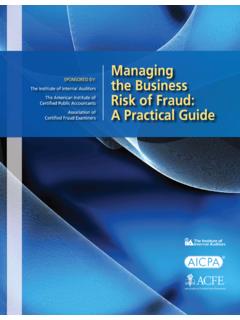
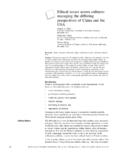
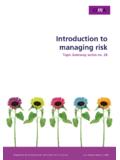
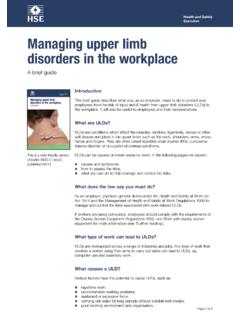

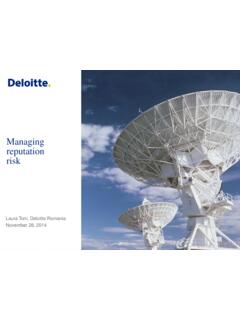
![Untitled-1 [fulfillment.lfg.com]](/cache/preview/e/2/1/9/0/d/7/9/thumb-e2190d79bb6b1cc1a93531efec405e82.jpg)